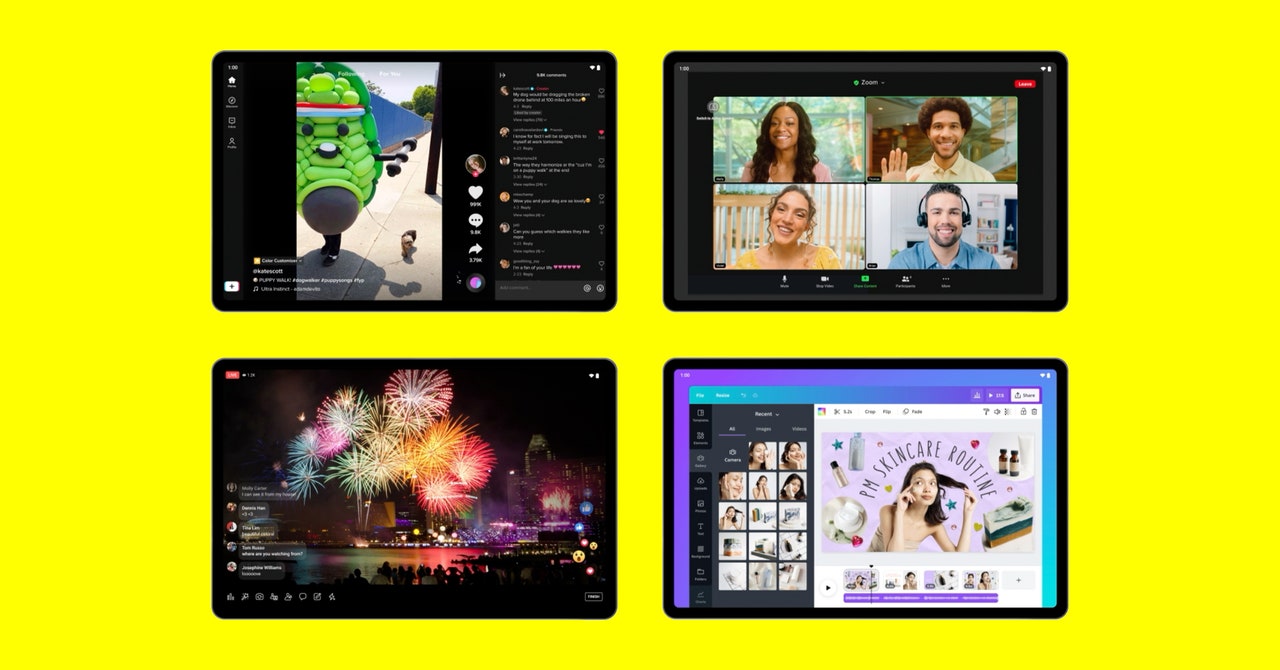There’s a reason why the word tablets is synonymous with iPad. Every year, Apple has been making small tweaks to the user interface of iPadOS—its tablet operating system—to optimize the experience of using it on a big screen: two-column views, a persistent taskbar, and cursor support, not to mention the respectable number of first- and third-party apps that make use of the extra space. You won’t find the same refinements on tablets running Google’s Android.
Most Android tablets feel like a blown-up version of an Android smartphone, and Google’s interest in optimizing the experience has waxed and waned over the years. There was Android Honeycomb in 2011, which had resizable widgets; and Android Nougat in 2016 added the ability to split-screen apps for easier multitasking. Now, there’s Android 12L and Android 13. The latter is currently in beta, but both bring the biggest changes we’ve ever seen to the interface.
Why now? There are almost 270 million active large-screen mobile devices running Android. But this shift to create a better Android tablet experience feels like a reaction to the huge growth in the computer industry that came during the pandemic, due to the demand for screens for remote work and virtual schooling. In 2019 manufacturers shipped roughly 144 million tablets, but this spiked to 163 million in 2020 and 168 million in 2021, according to IDC.
Tabula Rasa
Android 12L, introduced as a beta late in 2021, creates a refreshed interface for large-screen devices. With wider screens, you’ll now see separate columns in the notification drawer; there’s now a persistent taskbar at the bottom of the screen that lets you quickly open apps in split-screen mode; and apps will automatically adapt to make use of the extra screen space. It’s expected to make its way to more devices this summer.
These improvements carry over to Android 13, which is expected to launch even later. The upcoming version adds even more for tablets, like better stylus support and palm rejection, optimized screen savers and new widgets, plus faster and more efficient profile switching, making it easier to switch the tablet to your kid’s account when you hand it off to them . Android 13 will also make it easier to have multiple instances of the same app open simultaneously.
Scott Blanksteen, senior director of product management at Google, says demand and usage of tablets have been increasing for both productivity and entertainment, and that’s why Google rushed to make Android 12L instead of waiting to roll these tablet enhancements into Android 13. This slightly faster track might mean that more devices will deploy Android 12L before the end of the year, whereas Android 13 will likely land on most tablets in 2023, given how long it takes companies like Samsung and Lenovo to roll out Android updates.
Apps are a major part of this refocus on tablets too. “App experiences have to be great, and that has to start with Google,” Blanksteen says. It’s why the company will be updating more than 20 Google apps with tablet optimizations within the coming weeks, from a redesigned YouTube Music app to a more space-conscious Google Maps app.
.
